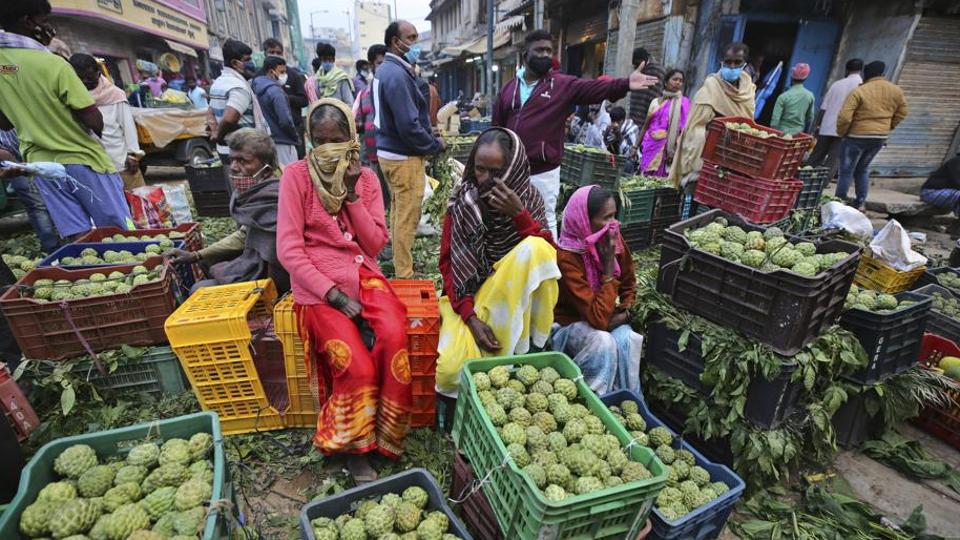Transforming food systems for rural prosperity
The study has been conducted by International Fund for Agricultural Development
The 2021 Rural Development Report analyses the linkages between the prosperity of rural people and the transformation of food systems. Small-scale farmers, rural workers and entrepreneurs produce, process and distribute much of the world’s food, yet many are unable to earn a decent living. The report examines how opportunities in the food system can generate more diversified and equitable outcomes.

The report distinguishes drivers, components and outcomes of food systems that interact against a backdrop of the wider food environment. It takes as its starting point the desired outcomes of food systems. The central challenge in transforming food systems is to optimise nutrition, livelihoods and environment while ensuring resilience. There are critical trade-offs to be navigated, most notably among keeping nutritious diets affordable, paying the true environmental costs of production and distribution, and enabling those who produce food to earn a decent living.
The analytical lens is rural livelihoods. While recognising that nutrition, environment and resilience outcomes are equally important, the report pays specific attention to the livelihood outcomes of food systems. The vision is one of change driven by a new generation of rural agrifood entrepreneurs – young women and men who use their innovative energy, digital skills and voice to capitalise on opportunities, helping to drive rural prosperity for all.
Transforming food systems is a long-term generational endeavour.
Looking back a generation, food systems have since changed beyond recognition. Global agricultural output has risen enormously, and hunger has come down sharply. Yet, paradoxically, as the efficiency of food production increased, well-intentioned food and agricultural policies generated incentives, externalities and spillovers that have led to poor nutrition, environmental decline and rural inequality. The challenge for this generation is to recognise the interlinkages within food systems, to make explicit trade-offs between desired outcomes, and to avoid unintended and uncompensated costs and consequences. Choices today will determine how food systems transform for decades to come, so breaking the intergenerational cycle of poverty, hunger and malnutrition needs to start now.
The pathways to transform food systems vary in different food environments.
They vary in the physical, economic, political and sociocultural contexts in which consumers engage with the food system and acquire, prepare and consume food. The ways that food systems function vary substantially across different geographies, different market segments and the political economy of different countries. Food systems range from the localised and traditional with informal markets to the consolidated supermarket-driven model of high-income countries. Rural prosperity is inextricably connected with the way the entire food system functions – from the local to the global level.
Food systems are in continuous flux caused by external drivers that shape the pace of and potential for success.
The High Level Panel of Experts on Food Security and Nutrition in 2017 identified five main categories of drivers of food system changes. Biophysical and environmental drivers include natural resource and ecosystem services, and climate change. Political and economic drivers include leadership, globalisation, foreign investment and trade, food policies, land tenure, food prices and their volatility, and conflicts and humanitarian crises. Socio-cultural drivers include culture, religion, rituals, social traditions and women’s empowerment. And demographic drivers include population growth, changing age distributions, urbanisation, migration and forced displacement. The relative impact of each driver depends on the type of food system in question, the type of actors involved, and the type of actions and policies decided upon.
Food system components include the production and consumption of food as well as the food system midstream – the vast network of agrifood enterprise activity between the farmer’s gate and the consumer’s plate.
Agriculture and food production shape food consumption and diets, particularly for those who consume food they produce themselves. But changes in rural and urban diets and in food consumption patterns drive changes in agriculture and food production. The food system midstream connects producers and consumers and includes all the economic activity associated with transporting, processing, storing, packaging and recycling, along with support services such as finance, machinery and advice.
The study can be accessed here
(The study has been conducted by International Fund for Agricultural Development)
All Access.
One Subscription.
Get 360° coverage—from daily headlines
to 100 year archives.



HT App & Website







